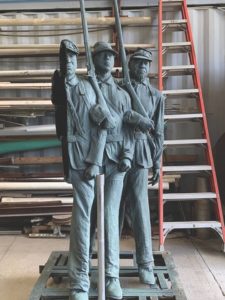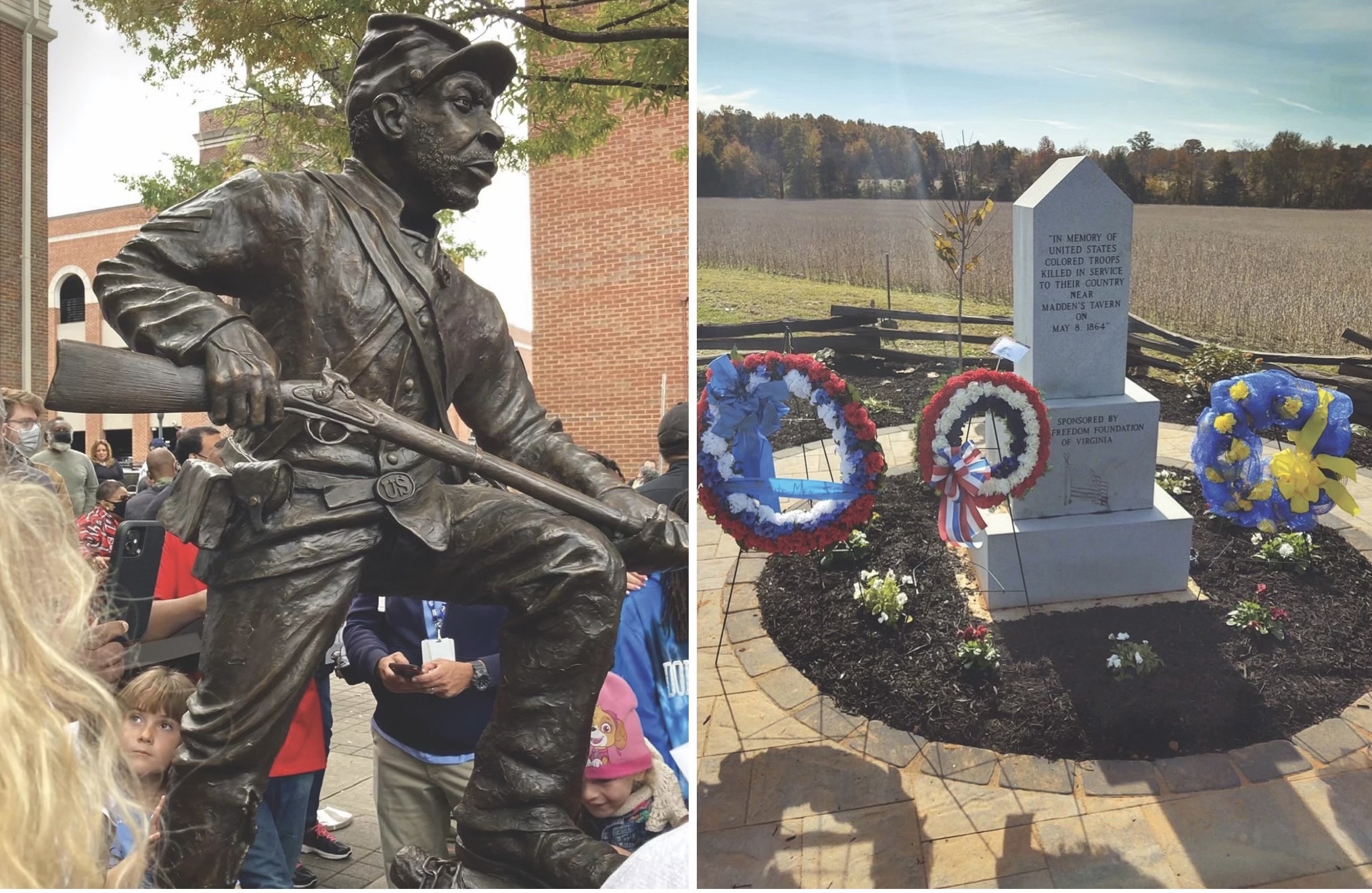As Civil War scholarship and public interpretation expands, a greater importance is being paid to sharing the story of the African American experience during the Civil War, including on the home front and the role of Black troops in the U.S. Army. As part of those efforts, three new monuments honoring the contributions and sacrifice of the USCT have recently been unveiled.
On October 23, 2021, Franklin, Tenn., commemorated the contributions of the USCT and Black Americans with the installation of a statue of a USCT soldier in its town square. The monument is positioned directly across from a Confederate monument. The installation was the culmination of an agreement reached through “A Fuller Story,” a project initiated by Reverends Hewitt Sawyers, Chris Williamson, Kevin Riggs, and historian Eric Jacobson. These four residents of Franklin—two Black men and two White men—got together to address the controversy over Confederate monuments, and the result was an agreement to erect a statue of a USCT soldier and five interpretive markers honoring both the suffering and resilience of Blacks. Franklin’s mayor and aldermen unanimously approved the agreement. No USCT troops took part in the 1864 Battle of Franklin, but this statue commemorates the approximately 300 Black men from Franklin County, most of whom were formerly enslaved, who joined the USCT.
On November 6, a new monument was unveiled in Culpeper, Va., to commemorate the sacrifice paid by three USCT captured and executed in the area by 9th Virginia Cavalry troopers on May 8, 1864. The granite obelisk stands at the Maddensville Historic Site, which also includes Madden’s Tavern and Ebenezer Baptist Church—both established by a free Black man, Culpeper resident Willis Madden. In addition to the monument, three signs interpreting the location and USCT involvement were also unveiled.
“This will be the first site dedicated to United States Colored Troops in Culpeper County, arguably the most fought-over county during the entire Civil War,” said Culpeper native Howard Lambert, founder and president of The Freedom Foundation of Virginia. The historic site is the culmination of years of work by the foundation, Civil War Trails, and the Piedmont Environmental Council.

“We don’t know their identities, nor do we know precisely where they’re buried, but we know what happened and that they lay nearby,” Lambert said of the executed USCT soldiers.
The three men and hundreds of other Black troops had just crossed the Rappahannock River into Culpeper during the Union’s Overland Campaign.
Madden’s Tavern, which included a general store, blacksmith and wheelwright’s shop, was a popular business and rest stop frequented by travelers. During the Civil War, it saw many visits by Union and Confederate soldiers.
On November 13, Cameron Art Museum in Wilmington, N.C., unveiled “Boundless,” a sculpture honoring the contribution of USCT to the Union victory at the Battle of Forks Road, which won Union control of Wilmington. Created by Stephen Hayes, the work features 11 figures with faces cast from local men, including a descendant of four USCT soldiers, reenactors, Vietnam veterans, and a Marine veteran. Two brigades of USCT troops—about 1,600 soldiers—charged enemy lines at the Battle of Forks Road in Wilmington, where some 8,500 Union troops gathered to wrest the city and its port from Confederates. A new Civil War Trails wayside describes the fighting, which occurred February 2-21, 1865, and traversed the current site of the museum. Earthworks are still faintly discernible at the site.





